| Home |
 |
Best Ancient - Kyphi by Arabesque Aromas |
|
Ancient Egyptian Kyphi by Arabesque Aromas
Incense in Ancient Egypt
Kyphi is a Greek word and a transliteration of the ancient Egyptian word Kapet, which  means Incense. Although, the word occurs in the Pyramid Texts, the first "Recipe" on how to prepare it, is contained in the medical Ebers Papyrus. It consisted of nine ingredients boiled in honey. Unfortunately, most of them cannot be identified with certainty. But about 1300 years later, the recipe for Kyphi seems to have changed. It now contained thirteen ingredients and the base for the paste was not solely honey, but also raisins, wine and oasis wine. There is a recipe inscribed twice in the temple of Edfu and once in the temple of Philai. The ingredients are exactly the same in all three cases and vary only in their proportions. means Incense. Although, the word occurs in the Pyramid Texts, the first "Recipe" on how to prepare it, is contained in the medical Ebers Papyrus. It consisted of nine ingredients boiled in honey. Unfortunately, most of them cannot be identified with certainty. But about 1300 years later, the recipe for Kyphi seems to have changed. It now contained thirteen ingredients and the base for the paste was not solely honey, but also raisins, wine and oasis wine. There is a recipe inscribed twice in the temple of Edfu and once in the temple of Philai. The ingredients are exactly the same in all three cases and vary only in their proportions.
The burning of incense was central to the worship of the gods of Ancient Egypt and large quantities of incense were burned every day in temples throughout Egypt.
Kapet, which is better known for its Greeks name Kyphi, was one of the most popular varieties and seems to have been in use since the Old Kingdom. As well as its pleasing scent, it was thought to heal snake bites and cure bad breath and asthma.
Recipes for Kyphi
Kyphi is a mixture of incenses dedicated to the Gods. Egyptian priests use it very often. It is also mixed with antidotes and is given in beverages to the asthmatic. There are many methods of preparation, one of which is the following, half a xestes (0.137 lt) of galingale, the same quantity of the major juniper berries, twelve mnai (5,239.2 g) of big stoned raisins, five mnai (2,183 g) of cleansed resin, one mna (436.6 g) each of sweet flag, aspalathos and lemon grass, twelve drachmai (48 g) of myrrh, nine xestes (2.466 lt) of old wine, two mnai (873.2 g) of honey.
Stone the raisins and chop them, and grind with wine and myrrh. Then grind and sieve the other ingredients and mix them with the aforementioned mixture. Let steep for one day. Then boil the honey until it thickens and mix thoroughly with the melted resin. Mix properly with the other ingredients and store in an earthenware pot.
Ancient Egyptian Kyphi
For ancient Egyptians, burning incense was a daily celebration of fragrance and their favorite incense of all was Kyphi. On a daily basis, the ritualized burning of incense in ancient Egypt consisted of frankincense in the morning, myrrh during the day and Kyphi in the evening. In addition to this, certain gods were associated with specific types of incense for example, Hathor was strongly associated with myrrh and certain types of incense were used for specific ceremonies. According to Egyptologists, Kyphi played an important role as a sacred fragrance in many ceremonies. Also, it was believed that Kyphi could revive the sexuality of the dead.
Various Kyphi recipes were made, some using about a dozen ingredients while others included over fifty. Kyphi recipes are inscribed on the walls of the ancient temples of Edfu and Philae, with pictographs of Kyphi being used and recipes for making it.
Kyphi produces a beautiful full-bodied, rich multi-layered bouquet with a warm, relaxing, sweet, spicy and sensual aroma. Made of only the finest natural organic and wildcrafted ingredients such as red wine, tupelo honey, sultana raisins, storax bark, saffron, sandalwood, aloeswood, frankincense, mastic, benzoin, cardamom seeds, galangal root, lemongrass, rose petals, and more.
Composition And Manufacturer
All recipes for Kyphi were made from wine, honey and raisins. Other identifiable ingredients include:
- Cinnamon and Cassia Bark
- Aromatic Rhizomes of Cyperus and Sweet Flag
- Cedar
- Juniper Berry
- Resins and gums such as Frankincense, Myrrh, Benzoin Resin, Labdanum and Mastic.
Some ingredients remain obscure. Greek and Aramaic recipes mention aspalathos, which Pliny describes as the root of a thorny shrub. Scholars do not agree on the identity of this shrub such as Alhagi Maurorum, Convolvulus Scoparius, Calicotome Villosa, Genista Acanthoclada and most recently Capparis Spinosa have been suggested. The Egyptian recipes similarly list several ingredients whose botanical identity is uncertain. Spikenard is listed as an ingredient in some recipes. The manufacture of Kyphi as given in the Edfu text involves blending and aging of sixteen ingredients in sequence. The result was rolled into balls and placed on hot coals to release a perfumed smoke.
Main Sixteen Ingredients
Kyphi is a mixture of sixteen ingredients such as of honey and wine, raisins and galingale, resin and myrrh, aspalathos and seseli. Moreover, of mastic and bitumen, bulrush and sorrel, together with the two kinds of juniper berries (of which one is called major and the other minor), cardamom and sweet flag.
 Modern availability and use Modern availability and use
As with other facets of Ancient Egypt, Kyphi has attracted commercial, religious and academic interest. Simplified recipes for Kyphi have been published for ceremonial use by contemporary pagans and therapeutic use by practitioners of aromatherapy. Several firms offer commercial versions of Kyphi for use as incense or perfume.
Edfu Temple
The Temple of Edfu was built in the first century BC. There are two different types of recipes for Kyphi inscribed on the walls of the temple, one of which includes synonms for many of the ingredients and explanatory notes. The another one is differ only in the quantities of each ingredients. A similar recipe which is again with the same ingredients but in slightly different quantities, can be found on the walls of the Temple of Philae.
Incense in Ancient Israel
Kyphi was not the only famous fragrant mixture in the ancient world. The Old Testament informs us about the sacred composite incense used by the priests for the worship of Jehovah.
Contact us to buy or for more information on ancient egyptian kyphi, ancient egyptian incense, egyptian sacred kyphi, egyptian kyphi, ancient egyptian incense sticks, dhoop sticks, incense cones by Arabesque Aromas.
|


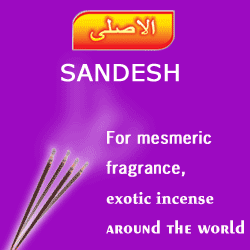
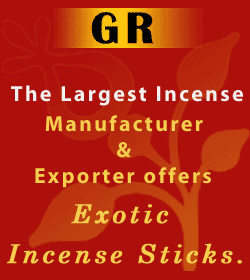
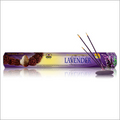
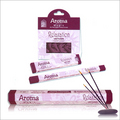
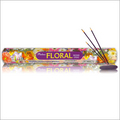
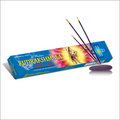
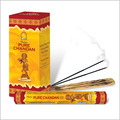
 means Incense. Although, the word occurs in the Pyramid Texts, the first "Recipe" on how to prepare it, is contained in the medical Ebers Papyrus. It consisted of nine ingredients boiled in honey. Unfortunately, most of them cannot be identified with certainty. But about 1300 years later, the recipe for Kyphi seems to have changed. It now contained thirteen ingredients and the base for the paste was not solely honey, but also raisins, wine and oasis wine. There is a recipe inscribed twice in the temple of Edfu and once in the temple of Philai. The ingredients are exactly the same in all three cases and vary only in their proportions.
means Incense. Although, the word occurs in the Pyramid Texts, the first "Recipe" on how to prepare it, is contained in the medical Ebers Papyrus. It consisted of nine ingredients boiled in honey. Unfortunately, most of them cannot be identified with certainty. But about 1300 years later, the recipe for Kyphi seems to have changed. It now contained thirteen ingredients and the base for the paste was not solely honey, but also raisins, wine and oasis wine. There is a recipe inscribed twice in the temple of Edfu and once in the temple of Philai. The ingredients are exactly the same in all three cases and vary only in their proportions. Modern availability and use
Modern availability and use